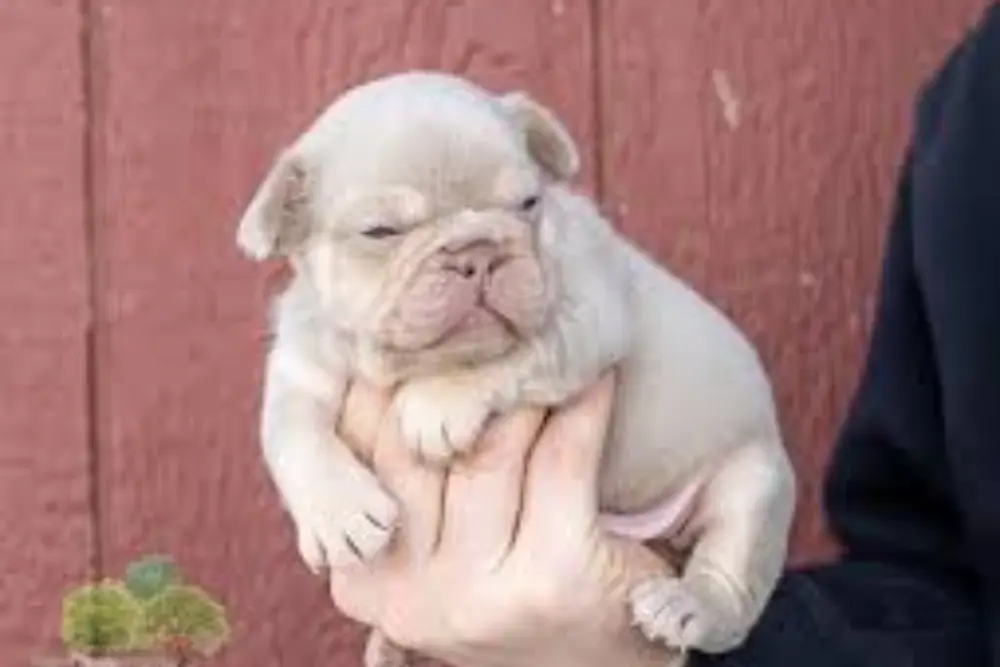
Baby Pug Colors: A Comprehensive Guide to Pug Coat Variations
Have you ever wondered about the adorable world of baby Pug colors? It’s a topic that sparks excitement and curiosity among dog enthusiasts and potential Pug parents. The sheer variety of colors that these lovable pups can come in adds an extra layer of charm to the already endearing nature of Pugs. Let’s dive into the delightful spectrum of baby Pug colors and explore the uniqueness each hue brings to these tiny bundles of joy.
The Basics of Pug Colors
Pugs come in a delightful array of colors, but the American Kennel Club (AKC) officially recognizes two standard hues: black and fawn. The most common are the classic fawn Pugs, with their charming tan coats and distinctive black masks. Then there are the sleek black Pugs, exuding a glossy elegance that turns heads.
It’s fascinating how each Pug’s color palette is a result of its diverse gene pool. While these colors capture our hearts, it’s important to note that some variations, like the rare silver, chocolate, and brindle, may not be AKC-approved for show competitions.
Fawn Pugs: The Classic Beauties
If you’re a fan of Pugs, you’ve likely fallen in love with the timeless charm of Fawn Pugs. These classic beauties are a favorite among Pug enthusiasts for their distinct features and lovable personalities.
Fawn Pugs are easily recognizable by their tan-colored coat that often has a hint of yellowish or pale tan shade. One of their most endearing features is the black muzzle and ears, giving them an adorable contrast. Their expressive brown eyes add a touch of warmth and playfulness to their overall appearance.
In the world of media, famous Fawn Pugs have captured the hearts of many. Their charming looks and irresistible antics have made them popular stars in various movies, TV shows, and social media platforms. Their on-screen presence often mirrors their real-life personalities, showcasing their playful, loving, and sometimes mischievous nature.
Speaking of their nature, Fawn Pugs are known for their friendly and affectionate behavior. They thrive on human companionship and are often found wagging their curly tails in excitement. These little guys are playful souls, always up for a game or a snuggle on the couch. Their mischievous streak adds a delightful touch to their character, making them not just pets but cherished members of the family.
Black Pugs: Elegance in Ebony

Meet the enchanting Black Pugs – the epitome of elegance in ebony fur. Their glossy, dark coat, a result of a dominant gene, not only exudes sophistication but comes with a surprising bonus – minimal shedding. For those looking to share their homes with a furry friend while keeping allergies at bay, Black Pugs might just be the perfect companions.
Beyond their luxurious appearance, Black Pugs are bundles of joy and energy. Their lively nature makes them wonderful playmates and cheerful additions to any family. They boast round, expressive eyes that capture your heart instantly, reflecting their inherently sweet and affectionate disposition.
When considering a pet, it’s not just about aesthetics but also about lifestyle. Black Pugs, with their charming personalities and hypoallergenic coats, are well-suited for individuals or families seeking a delightful, low-maintenance companion. Their ebony fur not only adds a touch of sophistication but also makes them stand out in the world of Pug colors.
Exploring Rare Pug Colors
White Pugs: A Rare Elegance

White Pugs are a true rarity, capturing hearts with their pristine appearance. These charming canines stand out with their all-white coats, making them unique in the Pug community. However, their rarity comes with a cautionary note.
Most white Pugs fall into the category of leucistic or albino, which may bring health concerns. Their lack of pigment can make them more susceptible to sunburn and skin issues. It’s essential to provide them with extra care and attention, especially in sunny conditions.
Despite these challenges, white Pugs exude a special charm that has won the affection of many Pug enthusiasts.
Brindle Pugs: Unleashing the Tiger Stripes
Brindle Pugs, often likened to little tigers, boast a unique coat pattern that sets them apart. Instead of the traditional two-color scheme, brindle Pugs display a mix of brown, cream, and black stripes, creating a mesmerizing tapestry.
These charming Pugs are known for their individualistic personalities. While some describe their patterns as tiger stripes, others see an “ink blot” effect. Each brindle Pug is a unique work of art.
Training brindle Pugs might require a bit of patience, as their personalities can be as varied as their coats. However, their distinct appearance and playful demeanor make them a delightful addition to any Pug-loving family.
Silver Pugs: Embracing the Lighter Side
Silver Pugs bring a touch of elegance with their lighter coat, often described as a deep grayish hue. Their popularity is on the rise, capturing the hearts of Pug enthusiasts seeking a unique twist on the traditional fawn and black colors.
While not as commonly recognized, silver Pugs are making their mark in the Pug community. Their distinctive coloring, complemented by light tan markings, adds a layer of sophistication to these lovable companions.
Apricot Pugs: The Warmth of Orange Fur
If you’ve ever fancied a Pug with a touch of warm orange, then apricot Pugs might steal your heart. These charming little companions boast a rich, reddish-brown coat that can remind you of butterscotch syrup. With their darker masks and tracings, apricot Pugs stand out among their peers. While their appearance is irresistible, it’s essential to note that, despite their slight differences, fawn and apricot Pugs are considered the same color variety by most dog registries.
Unique Pug Colors
Pink Pugs: Rare Beauties Needing Special Care

Imagine a Pug with a pale pink hue – that’s the rare beauty of a pink Pug. These dogs, often referred to as albino Pugs, stand out with their unique coloration. As adorable as they look with pink noses and blue eyes, pink Pugs come with some considerations. Their lack of pigment makes them more susceptible to skin problems, and they may face challenges with vision and hearing. If you’re considering a pink Pug, be ready to provide the special care they deserve.
Panda Pugs: A Playful Resemblance to Pandas
For a Pug that resembles the distinctive coloring of a panda, look no further than panda Pugs. These adorable companions have a mainly black coat with striking white patches on their chest, face, neck, and legs. Panda Pugs often sport light brown to chocolate brown eyes, making them even more captivating. Not only do they capture your heart with their appearance, but panda Pugs also tend to shed less than some other Pug varieties. If you’re looking for a playful and low-shedding companion, a panda Pug might be the perfect addition to your family.
Exotic Pug Colors
Chocolate Pugs: Sweet and Rare
Meet the chocolate Pug, a delightful rarity born from a diluted black color. Imagine a Pug with a rich, shiny brown coat that gleams like fine chocolate. These adorable pups stand out with their deep mahogany eyes perfectly complementing their luscious fur. While their distinctive coloring makes them unique, it’s essential to note that chocolate Pugs are relatively rare, adding an extra layer of charm to these sweet companions.
Merle Pugs: Beauty with Controversy
Enter the world of Merle Pugs, adorned with a captivating coat pattern that’s as beautiful as it is controversial. The merle gene creates a mesmerizing mottled or marbled effect in their fur. Picture a Pug with a one-of-a-kind pattern blending various shades. However, it’s crucial to approach Merle Pugs with care. The unique coat comes with potential health concerns, as the Merle gene may lead to issues like deafness and blindness. While their beauty is undeniable, responsible breeding is essential to ensure their well-being.
Black and Tan Pugs: A Classic Elegance
Discover the classic elegance of black and tan Pugs, showcasing a predominantly black coat with tan markings. Picture a Pug with a timeless charm, resembling a miniature Rottweiler. The black and tan combination adds a touch of sophistication to these already charming companions. However, it’s important to note that this color variation isn’t officially recognized by major kennel clubs. Despite their alluring appearance, potential Pug parents should be aware of the non-standard status and consider the health implications associated with this unique coloration.
Choosing the Perfect Pug Color
- Consider Your Lifestyle and Preferences: Pugs come in a rainbow of colors, from classic fawn and black to the more unique silver, chocolate, and even panda or brindle coats. Reflect on your lifestyle and preferences – do you want a playful partner, a show-stopper, or a gentle friend? The color can often reflect certain traits, but remember, personality is key!
- Let Personality Shine: While colors are charming, a Pug’s personality is what truly steals the show. Consider the traits you desire in a furry friend – are you looking for an energetic playmate, a laid-back cuddle buddy, or a bit of both? Pug colors may vary, but the right personality match is what creates a lifelong bond.
- Research Breeders: Before diving into Pug parenthood, research your breeders thoroughly. Understanding a Pug’s health background is crucial. Reputable breeders provide insights into a Pug’s lineage, ensuring a healthier and happier companion. This step helps you make an informed decision and ensures your Pug starts life on the right paw.
The Health Risks of Different Pug Coat Colors
While we adore Pugs in their various shades, it’s crucial to be aware that different coat colors might be linked to specific health issues.
- White Pugs: These little cuties, often mistaken for albino Pugs, can face an increased vulnerability to sunburn and skin cancer due to the lack of pigment in their fur. Always be cautious of prolonged sun exposure for our white-furred friends.
- Pink Pugs: The rare pink or albino Pugs, with their enchanting pink hue, come with their own set of challenges. Their lack of pigment makes them more prone to skin problems, and their eyes may struggle in dimly lit areas. Additionally, they might face hearing issues.
- Merle Pugs: These unique Pugs inherit the merle gene, which can lead to health problems like deafness and blindness. If you’re considering a merle Pug, ensure it’s from a reputable breeder who screens for these issues.
- Brindle Pugs: Sporting a coat resembling tiger stripes, brindle Pugs are indeed a unique sight. While their coloring is captivating, breeding them can be tricky. If you’re drawn to a brindle beauty, make sure to consult an experienced breeder.
- Chocolate Pugs: The rare chocolate Pugs may be a bit harder to find, but their distinctive brown fur makes them stand out. Keep in mind that they might be more expensive, and it’s crucial to source them from reputable breeders to ensure their well-being.
Understanding the potential health concerns linked to specific coat colors is a responsible step in ensuring the overall well-being of our beloved Pugs.
Final Thought about Pug Colors


